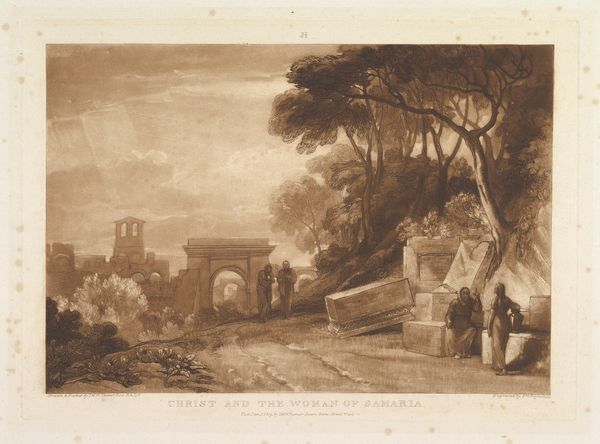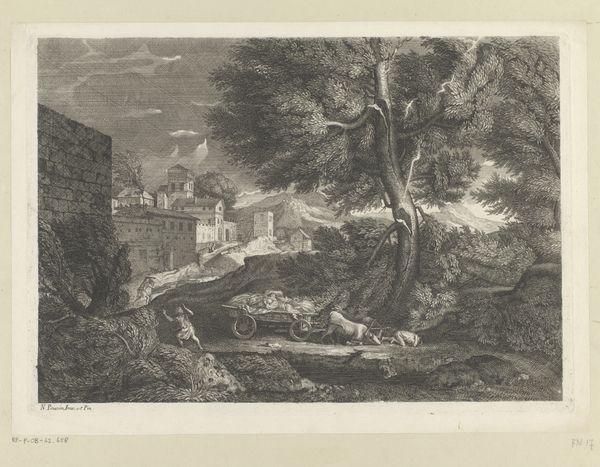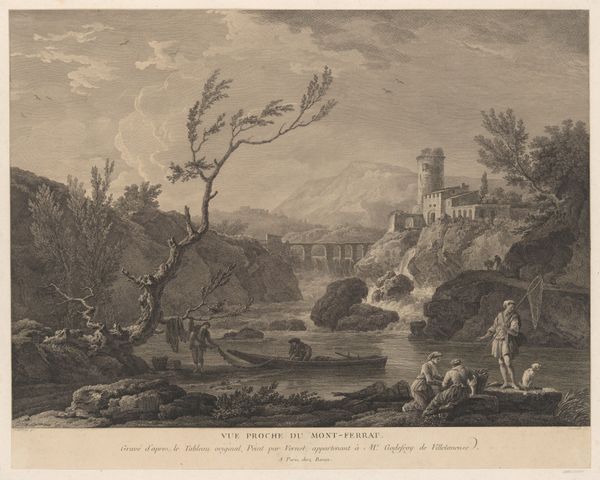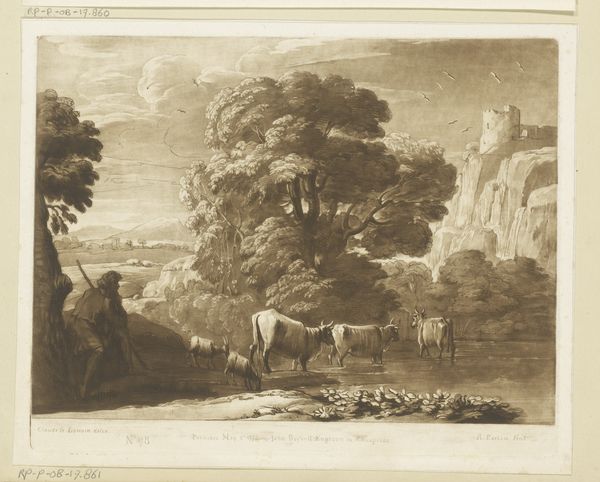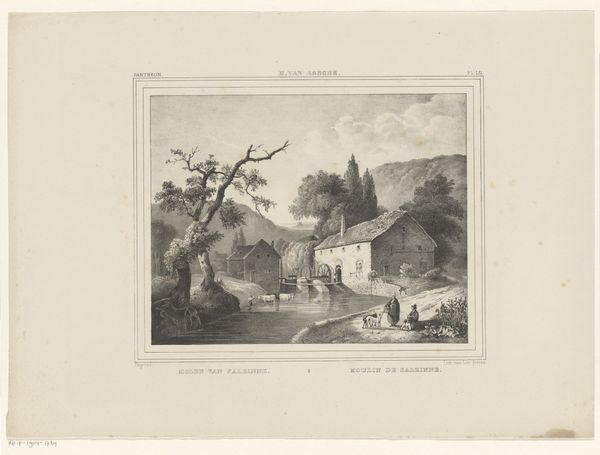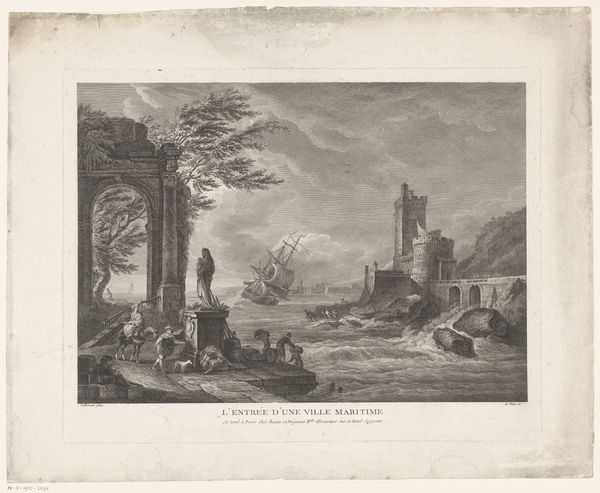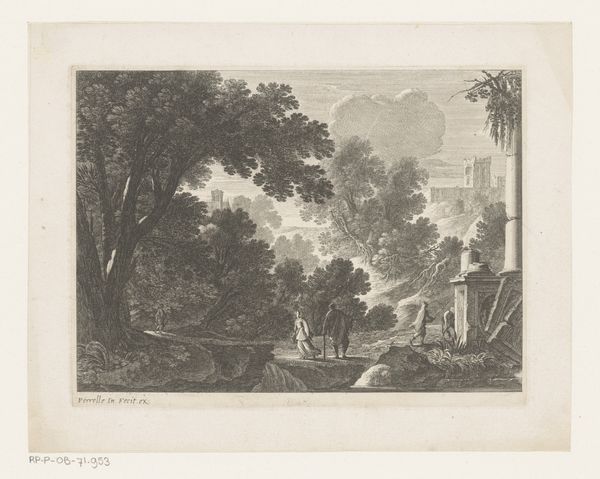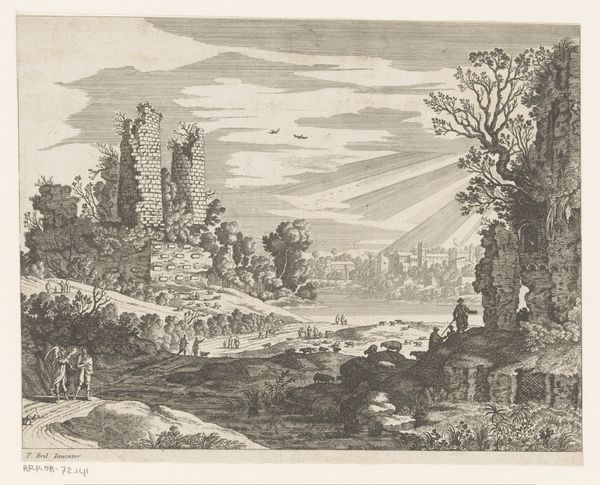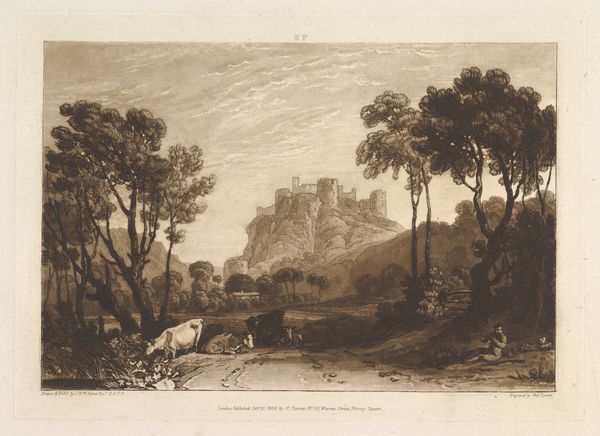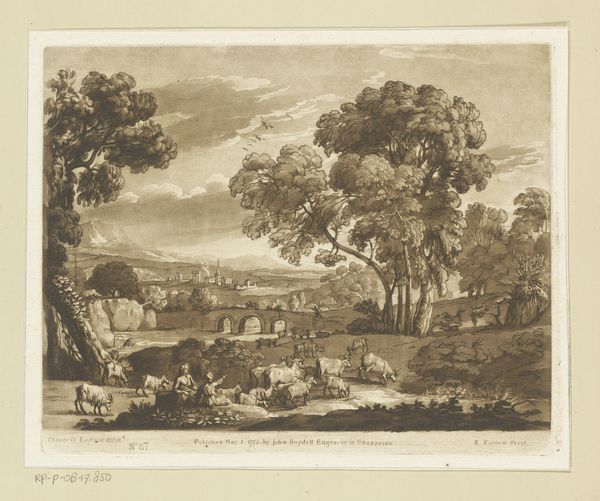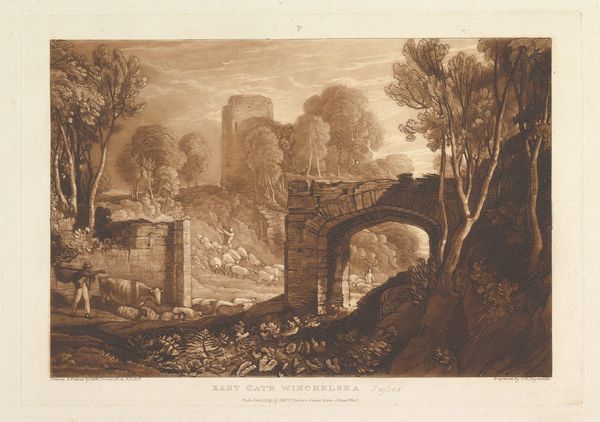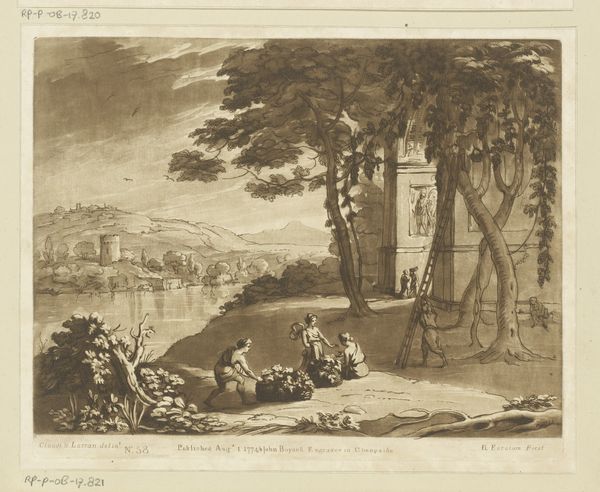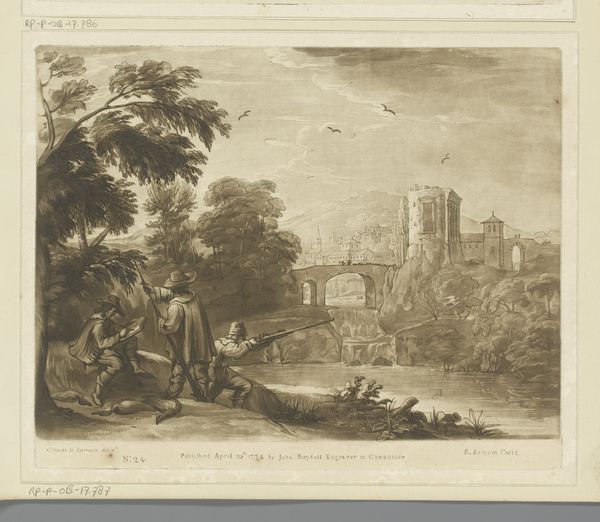
The Tenth Plague of Egypt (Liber Studiorum, part XII, plate 61) 1816
0:00
0:00
drawing, print, engraving
#
drawing
# print
#
landscape
#
romanticism
#
19th century
#
men
#
cityscape
#
history-painting
#
engraving
#
building
Dimensions: plate: 8 3/16 x 11 7/16 in. (20.8 x 29.1 cm) sheet: 11 1/2 x 17 in. (29.2 x 43.2 cm)
Copyright: Public Domain
J.M.W. Turner created this mezzotint, “The Tenth Plague of Egypt,” as part of his "Liber Studiorum" series. It’s an exploration of landscape, history, and the sublime. Turner was deeply engaged with the Romantic movement. He used dramatic imagery to convey powerful emotions. The image depicts the final plague visited upon Egypt, the death of the firstborn, as described in the Book of Exodus. We see the Egyptians’ suffering as a divine storm rages over the city. Turner made this print in Britain when debates about slavery were raging. Britain had outlawed the slave trade but not slavery itself. Exodus was frequently invoked by abolitionists. The biblical narrative offered a resonant story of liberation from bondage. Art historians look at the prints and paintings of the time, alongside political pamphlets and literature, to fully understand the debates that Turner engaged with. The meaning of art always depends on the context in which it was made and viewed.
Comments
No comments
Be the first to comment and join the conversation on the ultimate creative platform.
